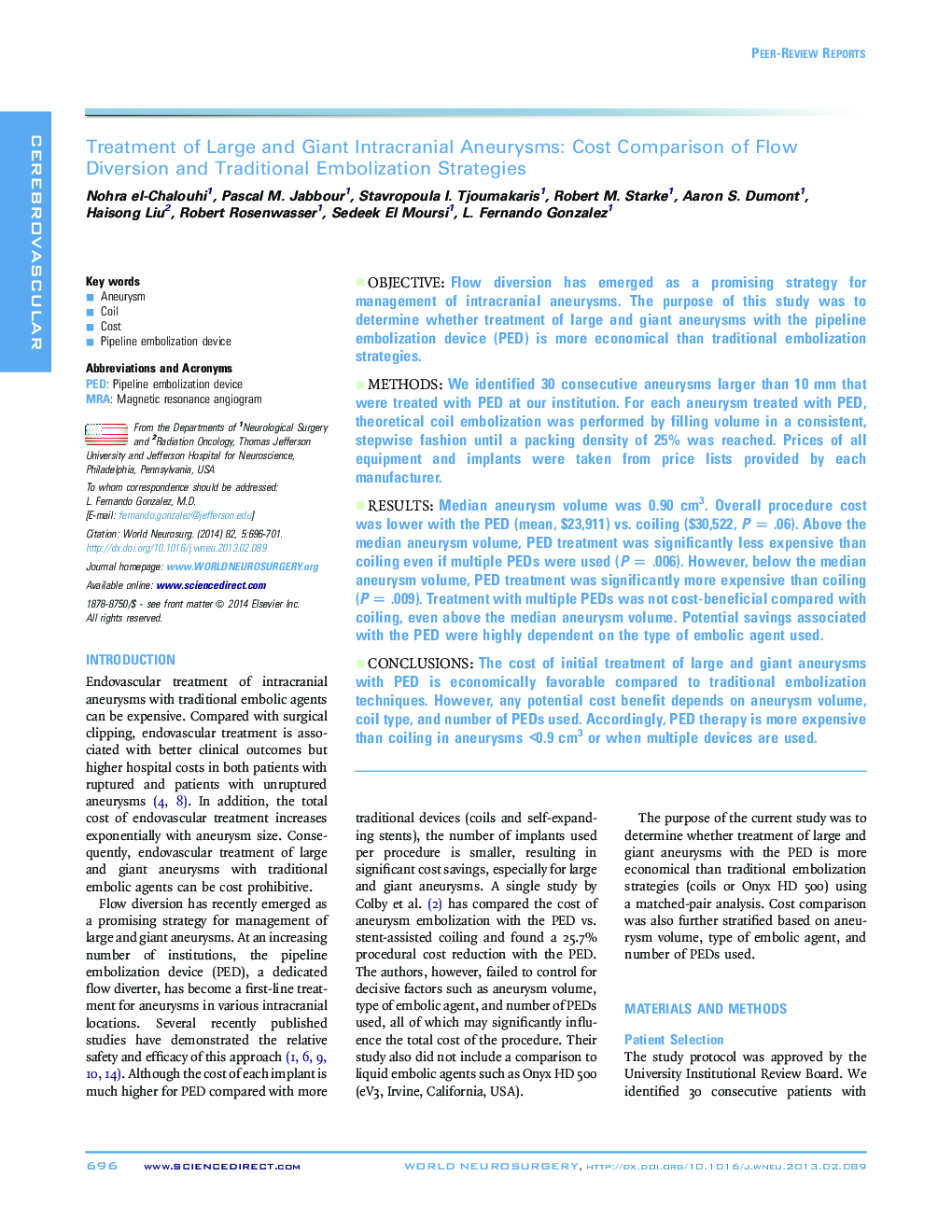| Article ID | Journal | Published Year | Pages | File Type |
|---|---|---|---|---|
| 3095315 | World Neurosurgery | 2014 | 6 Pages |
ObjectiveFlow diversion has emerged as a promising strategy for management of intracranial aneurysms. The purpose of this study was to determine whether treatment of large and giant aneurysms with the pipeline embolization device (PED) is more economical than traditional embolization strategies.MethodsWe identified 30 consecutive aneurysms larger than 10 mm that were treated with PED at our institution. For each aneurysm treated with PED, theoretical coil embolization was performed by filling volume in a consistent, stepwise fashion until a packing density of 25% was reached. Prices of all equipment and implants were taken from price lists provided by each manufacturer.ResultsMedian aneurysm volume was 0.90 cm3. Overall procedure cost was lower with the PED (mean, $23,911) vs. coiling ($30,522, P = .06). Above the median aneurysm volume, PED treatment was significantly less expensive than coiling even if multiple PEDs were used (P = .006). However, below the median aneurysm volume, PED treatment was significantly more expensive than coiling (P = .009). Treatment with multiple PEDs was not cost-beneficial compared with coiling, even above the median aneurysm volume. Potential savings associated with the PED were highly dependent on the type of embolic agent used.ConclusionsThe cost of initial treatment of large and giant aneurysms with PED is economically favorable compared to traditional embolization techniques. However, any potential cost benefit depends on aneurysm volume, coil type, and number of PEDs used. Accordingly, PED therapy is more expensive than coiling in aneurysms <0.9 cm3 or when multiple devices are used.
